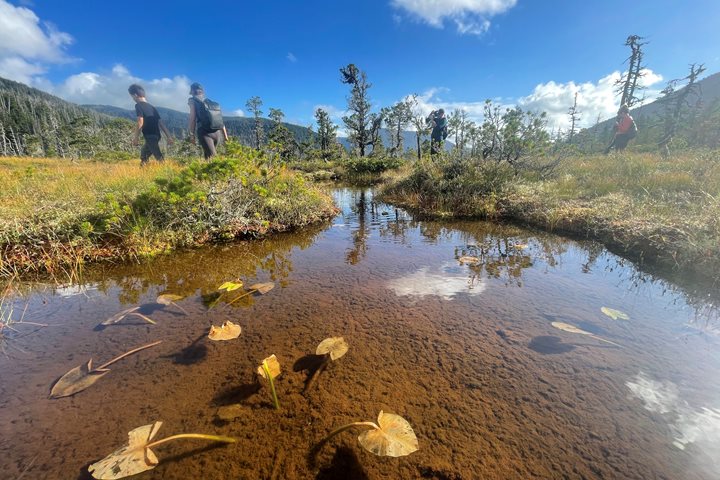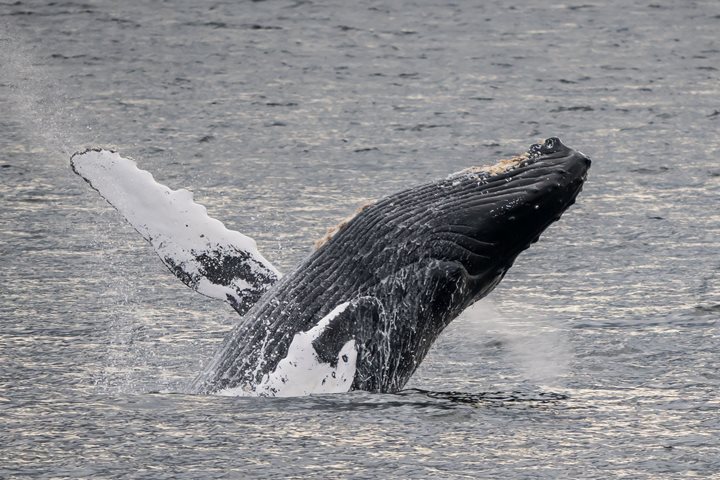At 6 o’clock this morning, we woke to a magnificent scene—Margerie Glacier one quarter of a mile ahead of the ship, and the Grand Pacific Glacier off our starboard side. We stood on the bow holding warm cups of coffee, gazing at the masses of ice before us. George Vancouver had mapped the region in 1791, but he missed this bay for good reason—it didn’t yet exist. At that time, the Grand Pacific Glacier extended 65 miles further south. Since then the massive glacier has retreated, and now there is a fresh landscape of U-shaped valleys, rounded mountains, polished rock walls, streams, and alluvial fans. Plant life returns, but slowly, and in stages: first there are lichens, then a succession of pioneer plants, alders, and eventually spruce trees. We saw brown bears near the water and mountain goats grazing on high alpine meadows. Marine birds were abundant today: kittiwakes, glaucous-winged gulls, common murres, tufted puffins, pelagic cormorants, and thousands of scoters. Sea otters surfaced near the ship, harbor seals rested on bergy bits, and Steller sea lions grumbled at one another as they crowded on small rock ledges. Glacier Bay is a raw and beautiful landscape, and a habitat that is still evolving as ice continues to retreat.
CallTest +1.800.397.3348







